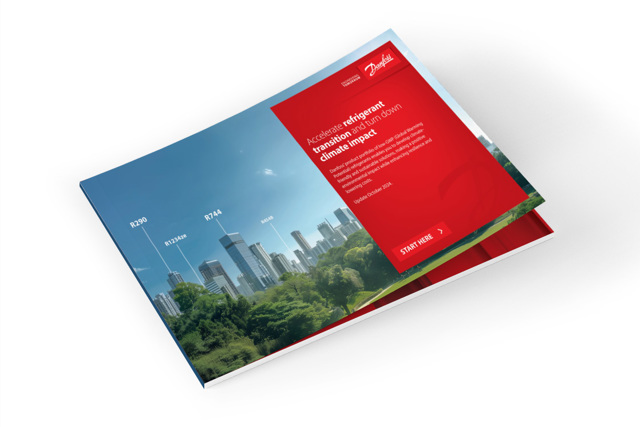The trend shows a growing acceptance of mildly flammable, A2L refrigerants, especially now that they have been incorporated into the new ISO and IEC standards allowing for charge sizes that are appropriate for substitution of the high GWP HFC’s. We also see highly flammable, A3 refrigerants increasingly being used though in smaller systems: A3 refrigerants are also supported by the new IEC 60335-2-89 standard which allows for up to 500 g of A3 refrigerant in hermetical systems. To allow for higher cooling capacities increased charge sizes are necessary. A new measure is to consider ‘releasable charge’ instead of the full system charge when evaluating the LFL (Lower Flammability Levels) . This can be justified if certain parts of the system can be isolated in case of leakage. The new measure is used in the (ed.7) IEC-60335-2-40.
CO₂ is widely used in industrial refrigeration and commercial refrigeration racks in the EU, NAM, Australia and Japan. We believe that this trend, which started in Europe, will eventually extend to the rest of the world.
We foresee ammonia continuing to be a very well accepted, particularly in industrial refrigeration applications, though its toxicity means requires unique safety measures. Low Charge systems are available and they are very efficient.
We expect that a solution using both CO₂ and ammonia in cascade will be increasingly used . We see the very energy efficient hydrocarbons playing an important role in lowcharge systems around the globe and especially in the EU abig increase in air to water heat pumps for domestic usage is foreseen – however for smaller capacities. Hydrocarbons will also be increased in chillers and large scale heat pumps where the systems are placed out door or in machinery rooms. We believe that HFCs will not disappear, but will be limited to those with the lowest GWP and will be combined with HFOs as is already happening. HFC and HFO are now moving towards more environmentally friendly, but often mildly flammable, versions, making safety precautions all the more important. The potential PFAS discussion and the following uncertainties is likely to result in some regional preferences for not using F-gases. In conclusion it means a high diversity of refrigerants.
The demand for low-GWP refrigerants will continue to challenge our current perception of which refrigerants can be used in certain applications, but will also drive innovations in system design.




